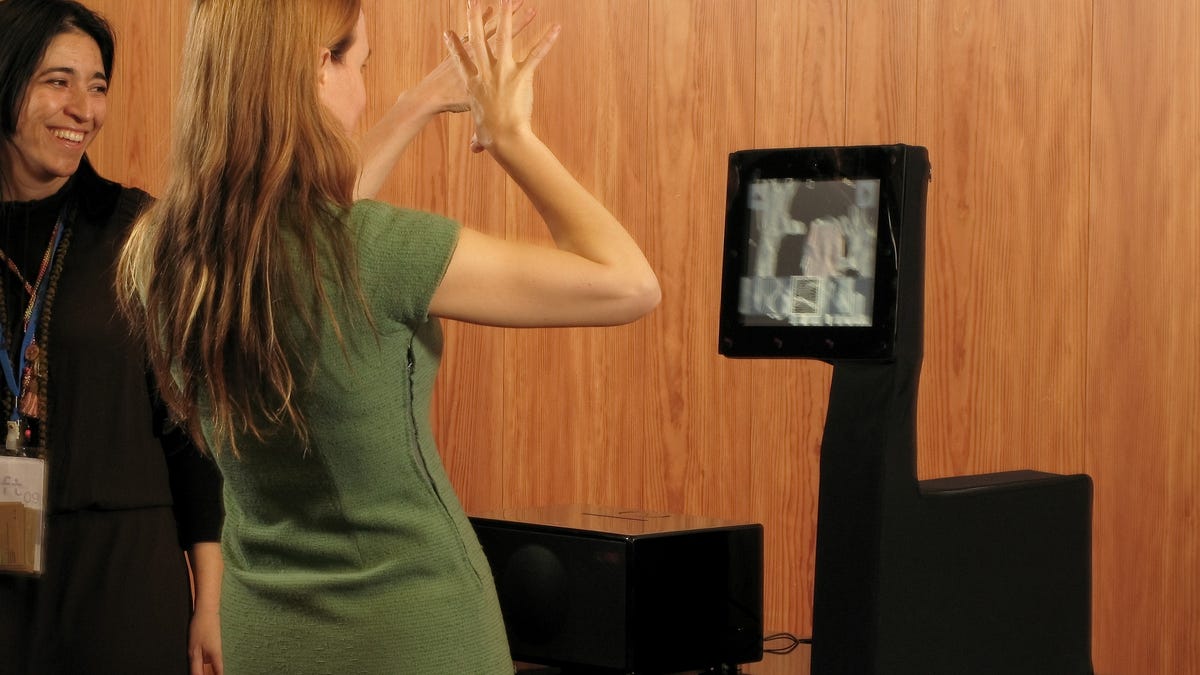Swiss robot wants some time with you
Processor capacity is no longer an issue for artificial intelligence. What robots need now is time to learn from humans, which is what the QB1 aims to do as a personal DJ.
SAN FRANCISCO--When Swiss developers designed the QB1 robot, they weren't going for human-like looks or cute puppydog mannerisms.
Instead, they're hoping QB1 will hook people in on a more meaningful level--by providing a handy music-suggestion service--and thus giving the robot continuous exposure to data stemming from real human interaction.
Artificial intelligence "systems need to learn in the real world, from real people. You cannot program them with knowledge from the real world," said Frederic Kaplan, CEO and co-founder of QB1 developer OZWE.
The QB1 was showcased to the public last weekend at Swissnex, an annex of the Consulate General of Switzerland here that's dedicated to bridging knowledge in science, education, art, and innovation between Switzerland and North America.
QB1 is what Kaplan calls a "robotic object"; people interact with it through gestures. In its first application, QB1 is loaded with a kind of disc jockey feature because that invites people to spend time with it.
Kaplan got this idea out of his experience working for 10 years with Sony's world famous dog-like AI robot, Aibo.
"What was frustrating was that nobody was interacting with it long-term. There are so many objects in your house, so why interact with an object that is only for pleasure?" he said. And as Aibo needed time with humans to learn, this was a fundamental problem.
"The limit for AI is not computing power, it's getting experience," Kaplan said. So QB1 tries to steal your time doing something useful, playing your music. The AI system incorporated into QB1 has about five different strategies to intelligently predict what music you want to listen to at the moment.
One of the approaches is based on statistical probability and might give the best results with the fewest errors in the beginning. Another more complicated scheme observes who is in the room, the time of the day, and how people move. After some time, it might have learned enough to perform better than the statistical probability analysis, and data gets prioritized based on your feedback. It is, in effect, learning the user.
"If indeed it is successful, it can be used for an enormous number of applications," Kaplan said.
At first glance, the QB1 seems to have nothing to do with AI. It's just an elegant screen mounted on a sleek, black, cloth-covered arm and box. The screen moves to look toward you, displaying a shadow of your movements and an intuitive interface.
According to Kaplan, QB1 is unique in having both an interactive gesture-based interface and robotic movements. With built-in infrared lights and sensors, it performs face recognition through 3D modeling without a stereo camera. It also detects how your body moves.
The AI system is layered on top of all this.
"It's the combination that's difficult. You need all these experts in the same team," he said. As a researcher at Switzerland's Ecole Polytechnique Federale de Lausanne, Kaplan founded OZWE a year ago with Martino d'Esposito. D'Esposito teaches at the University of Art and Design, Lausanne.
"Industrial and graphic design are core aspects of QB1," Kaplan said, mentioning how people's movements are reflected stylistically on the screen when they interact, as many people don't like to see their own raw image. This was discovered when a predecessor of QB1, Wizkid, was exposed to visitors for three months at The Museum of Modern Art in New York last year.
"We're now looking for people who want to try (out QB1) in their homes for a couple of weeks. Later we will start production and sell it, hopefully in 2009," Kaplan said.
